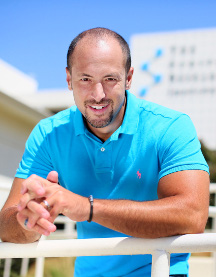A new cross-coupling simplifies the synthesis of drug-like molecules
Researchers at The Scripps Research Institute (TSRI) have designed a new molecule-building method that uses sulfones as partners for cross-coupling reactions, or the joining of two distinct chemical entities in a programmed fashion aided by a catalyst. The technique, described recently in the journal Science, paves the way toward other new chemical reactions and facilitates the synthesis of pharmaceutically-relevant molecules.
“It’s already clear that this method opens the door to creating new types of compounds and new types of bonds,” says Phil S. Baran, PhD, senior author of the study and Darlene Shiley Professor of Chemistry at TSRI.
This work was inspired by previous cross-coupling chemistry developed in the Baran lab, and catalyzed by discussions with pharmaceutical industry partners who view this as an area of major unmet need. Baran and his colleagues have previously studied decarboxylative cross-coupling reactions, where commonly-found carboxylic acids are transformed into many different molecules using inexpensive metal catalysts and techniques commonly used for amide-bond synthesis. Throughout these studies, Baran and coworkers showed that decarboxylative cross-coupling can have broad applicability and facilitate the synthesis of pharmaceuticals and natural products. These reactions hinge on the transfer of one electron from the metal catalyst to an activated carboxylic acid, which allows for the cross-coupling to occur.
In this work, the authors demonstrate the new desulfonylative cross-coupling reaction by synthesizing over 60 representative molecules, including alkyl-fluorinated compounds inaccessible with earlier generation methodologies developed in the Baran group. Access to such compounds are critical for drug discovery campaigns, since fluorine atoms enhance drug-like molecular properties. Representative molecules described in the Science paper include some reported by Merck and Novartis in published patents.
Baran’s group has already made their sulfone reagents and methods used in this study available to other chemists via Twitter who would like to use the technique. The new method is already having an impact on drug discovery programs at pharmaceutical companies with whom TSRI collaborates.
“I think the job of chemists in academia is to make things simpler. If we can have a small positive influence in making medicinal chemists lives easier, that will be a success for us,” says Baran. “This chemistry is another step in that direction.”
In addition to Baran, authors of the study, “Modular radical cross-coupling with sulfones enables access to sp3-rich (fluoro)alkyl-containing scaffolds,” include Rohan R. Merchant, Jacob T. Edwards, Tian Qin, Monika M. Kruszyk and Cheng Bi of The Scripps Research Institute; Guanda Che, Deng-Hui Bao, Wenhua Qiao and Lijie Sun of Asymchem Life Science; and Michael R. Collins, Olugbeminiyi O. Fadeyi, Gary M. Gallego, James J. Mousseau and Philippe Nuhant of Pfizer.
This work was supported by funding from the National Institutes of Health (grant GM-118176).
Send comments to: press[at]scripps.edu














